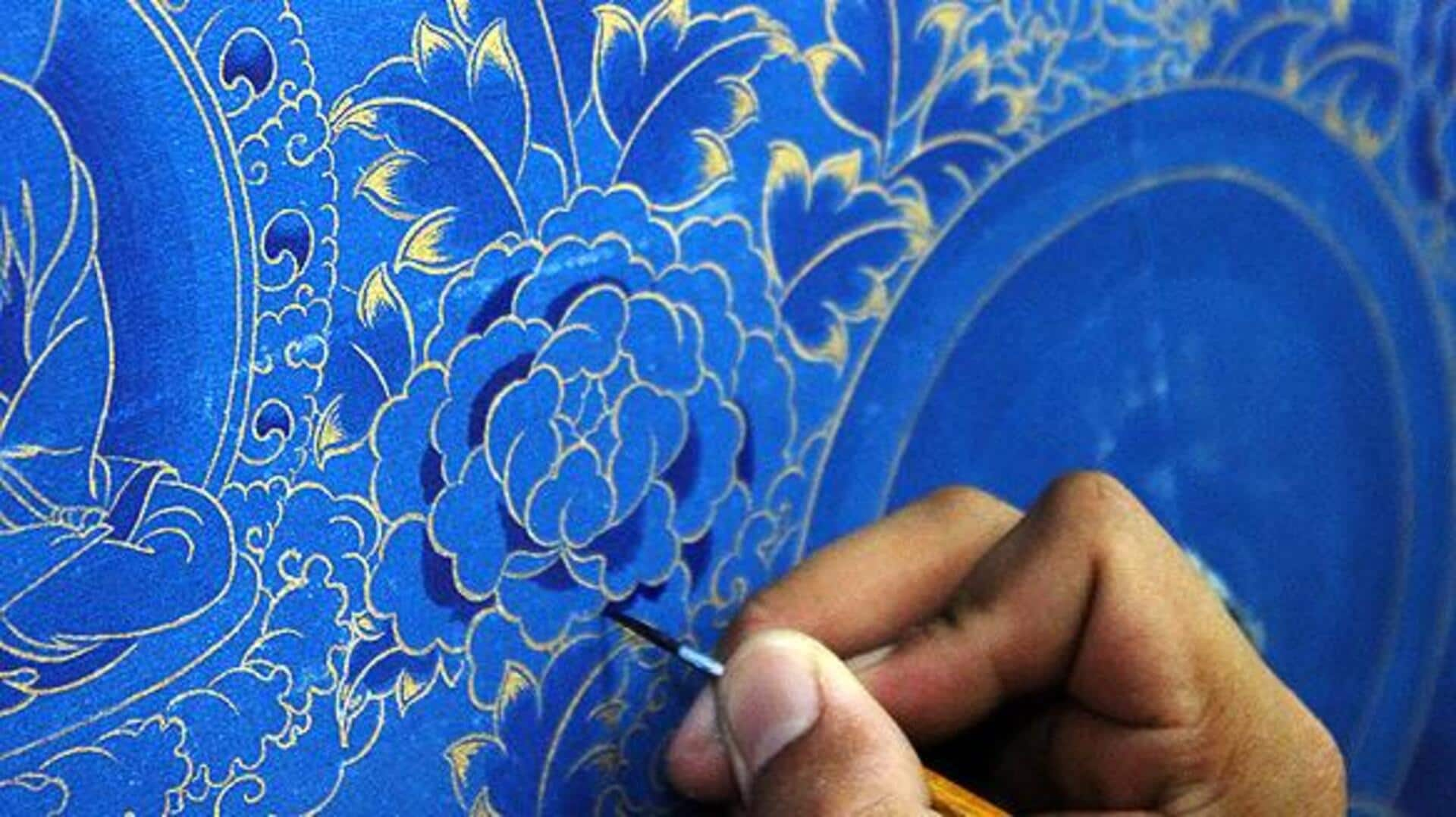
Introduction to Tibetan thangka art
What's the story
Tibetan thangka is a form of traditional Buddhist art that is culturally and spiritually rich. From depicting various deities, mandalas, or scenes from Buddhist teachings, these intricate paintings are often created on cotton or silk applique. Thangkas are important teaching tools and meditation aids in Tibetan Buddhism. Not only do they delight the eyes with their artistic beauty, they are also revered for their religious significance.
#1
Historical origins of thangka
The roots of Tibetan thangka dates back to the seventh century when Buddhism was brought to Tibet. While initially, thangkas were inspired by Indian and Nepalese art styles, they grew to develop their own unique Tibetan elements. Traditionally, these works of art were used as portable shrines while traveling or on pilgrimages, enabling practitioners to carry their spiritual practices with them.
#2
Symbolism in thangka paintings
Thangkas are rich in symbolism, with each element meticulously chosen to represent something. The colors used in these paintings are particularly significant; for instance, blue stands for purity and healing, while red symbolizes power and energy. Deities depicted in the artwork often embody different aspects of enlightenment or protection, acting as focal points for meditation.
#3
Techniques used in creating thangkas
Creating a thangka also requires a meticulous eye for detail and a commitment to following traditional techniques that have been passed down through generations. Artists use natural pigments from minerals and plant material to achieve vibrant colors that stand the test of time. The process involves precise measurements and proportions based on ancient guidelines, resulting in an accurate representation.
Tip 1
Preservation efforts for traditional art form
Preserving the tradition of thangka is important considering its cultural significance. These efforts include training new artists through apprenticeships, where they learn both artistic and spiritual aspects of this sacred art form. Further, initiatives are also aimed at raising awareness about the importance of these artworks among broader audiences globally.